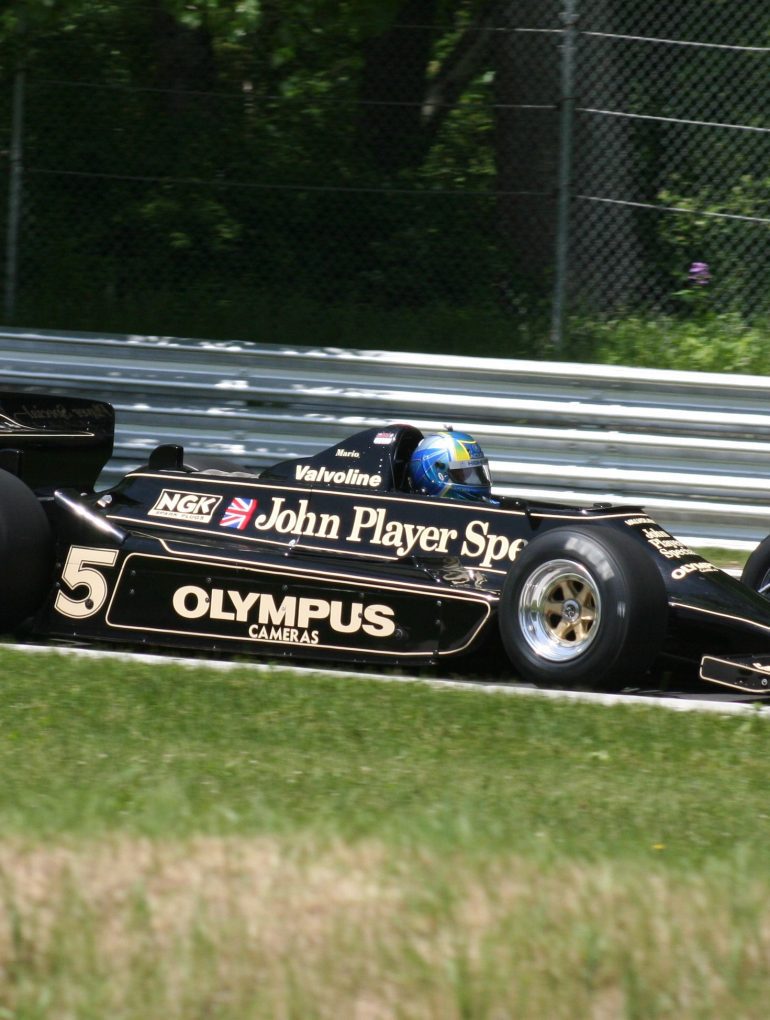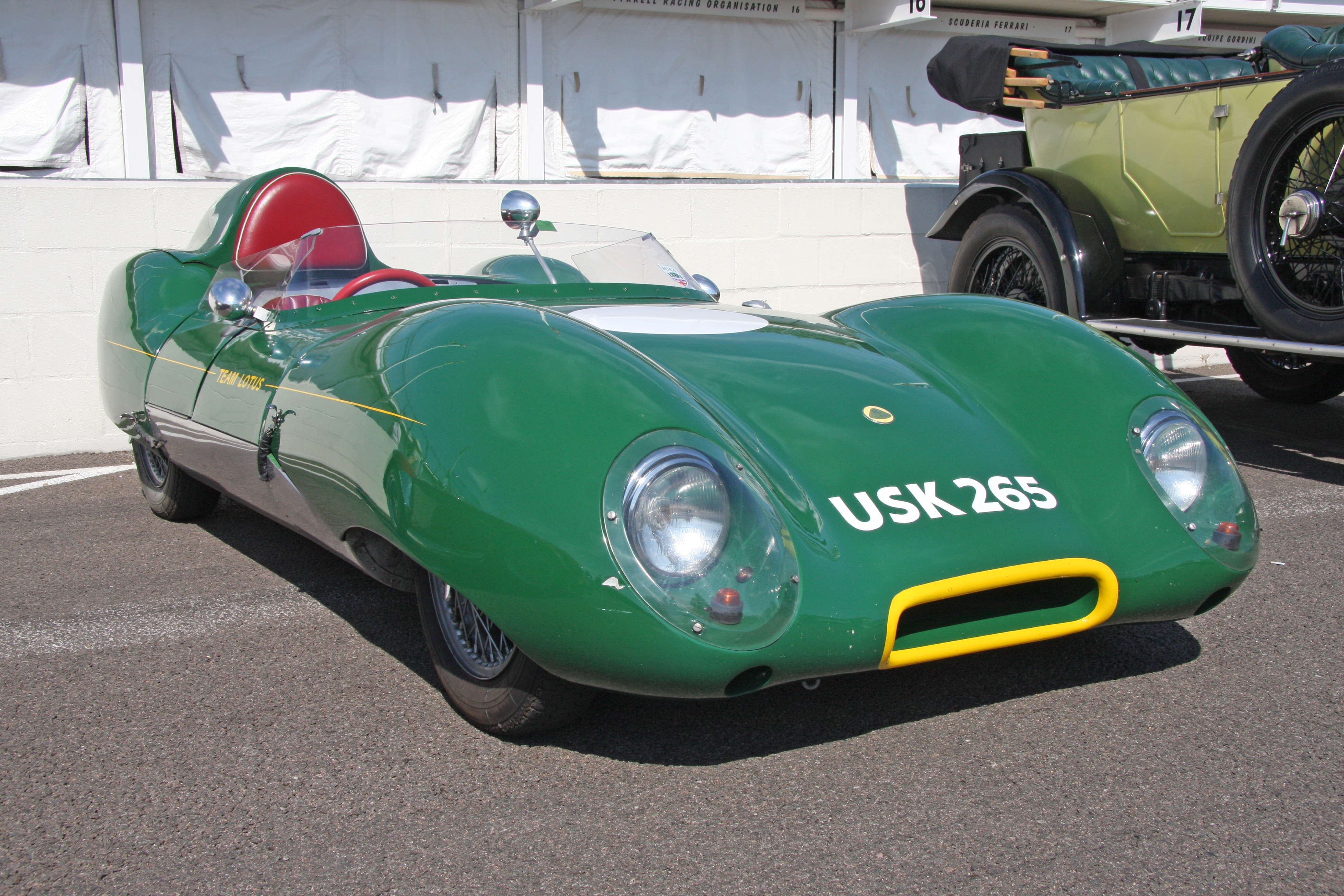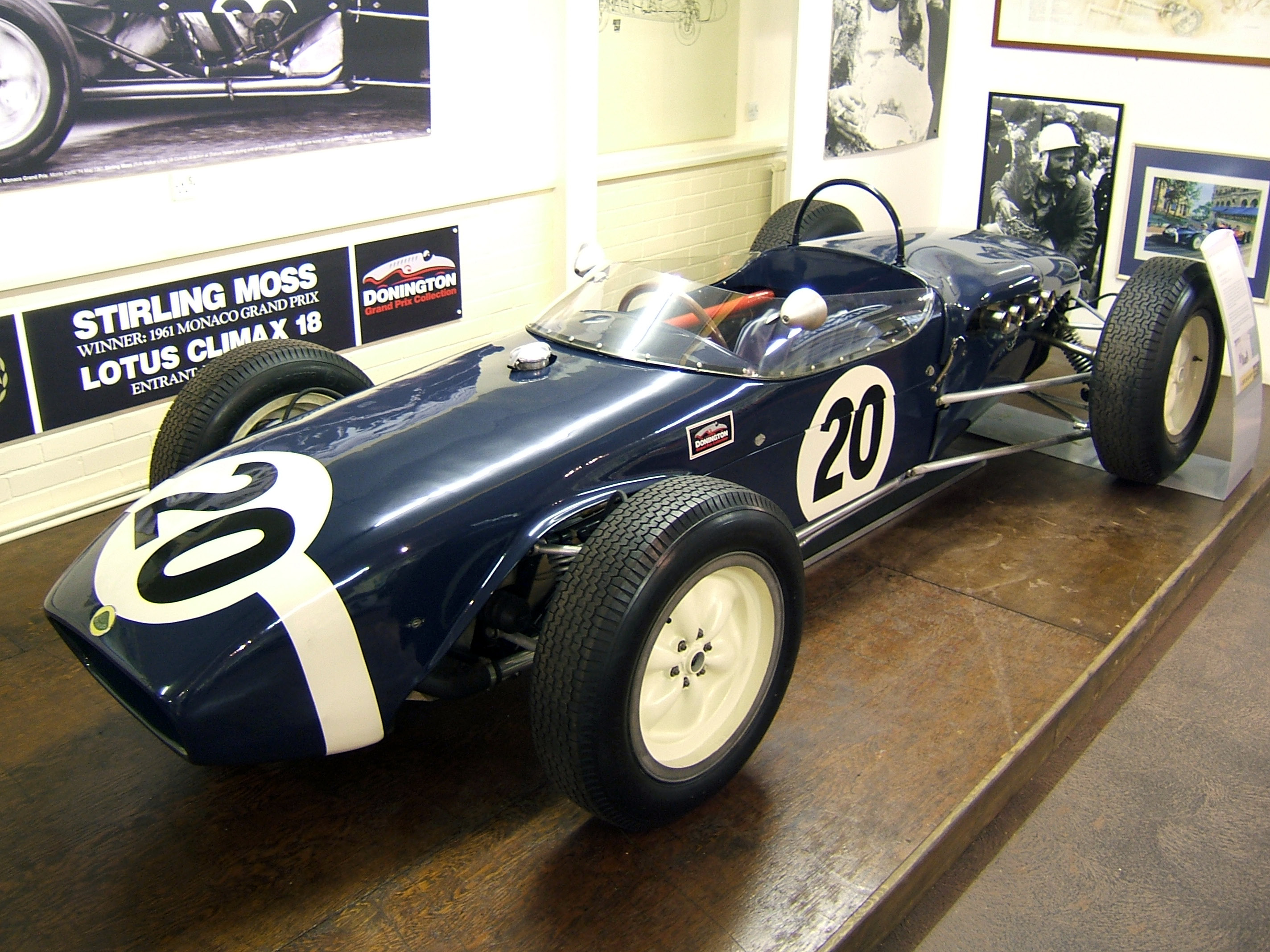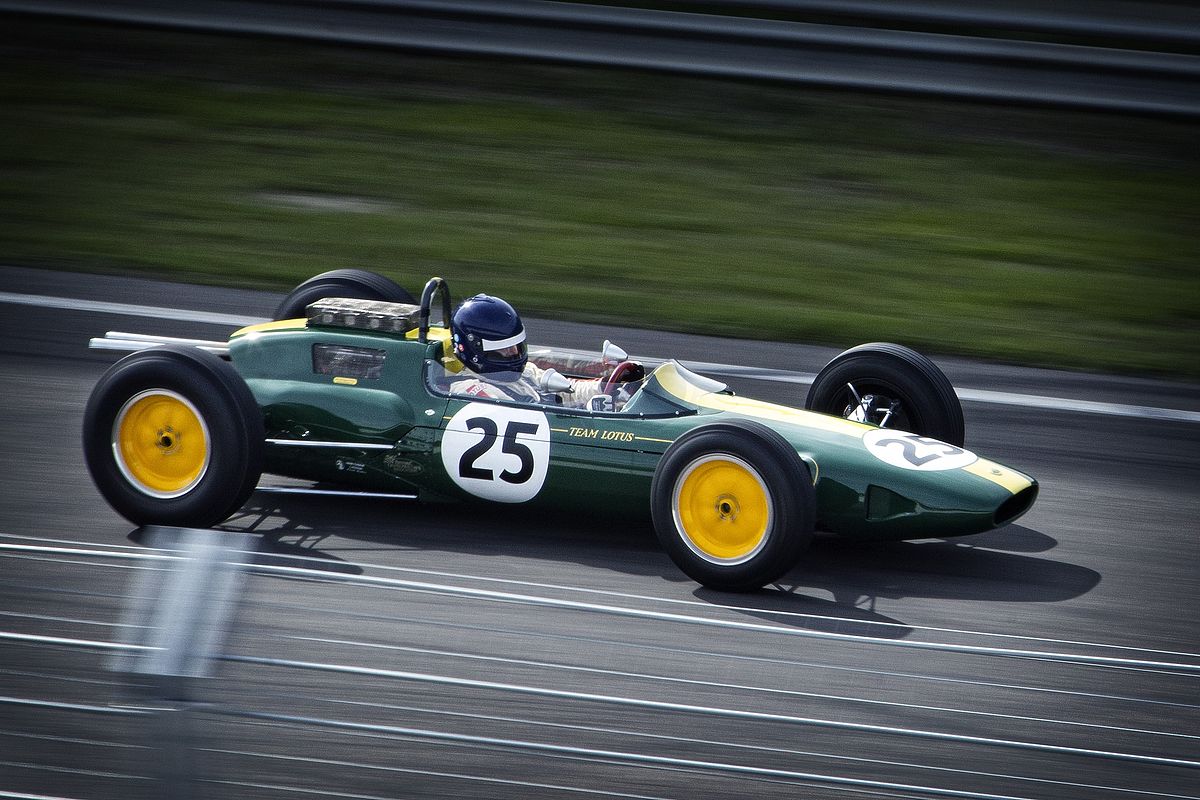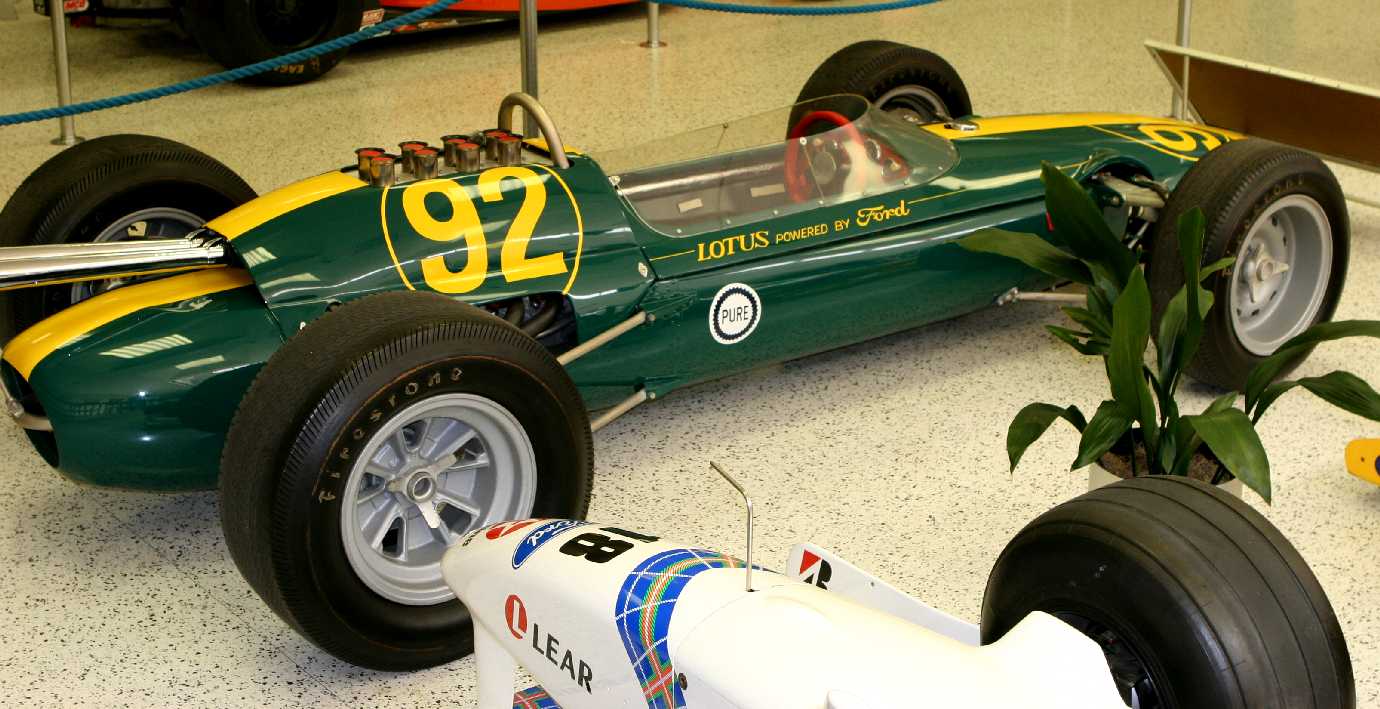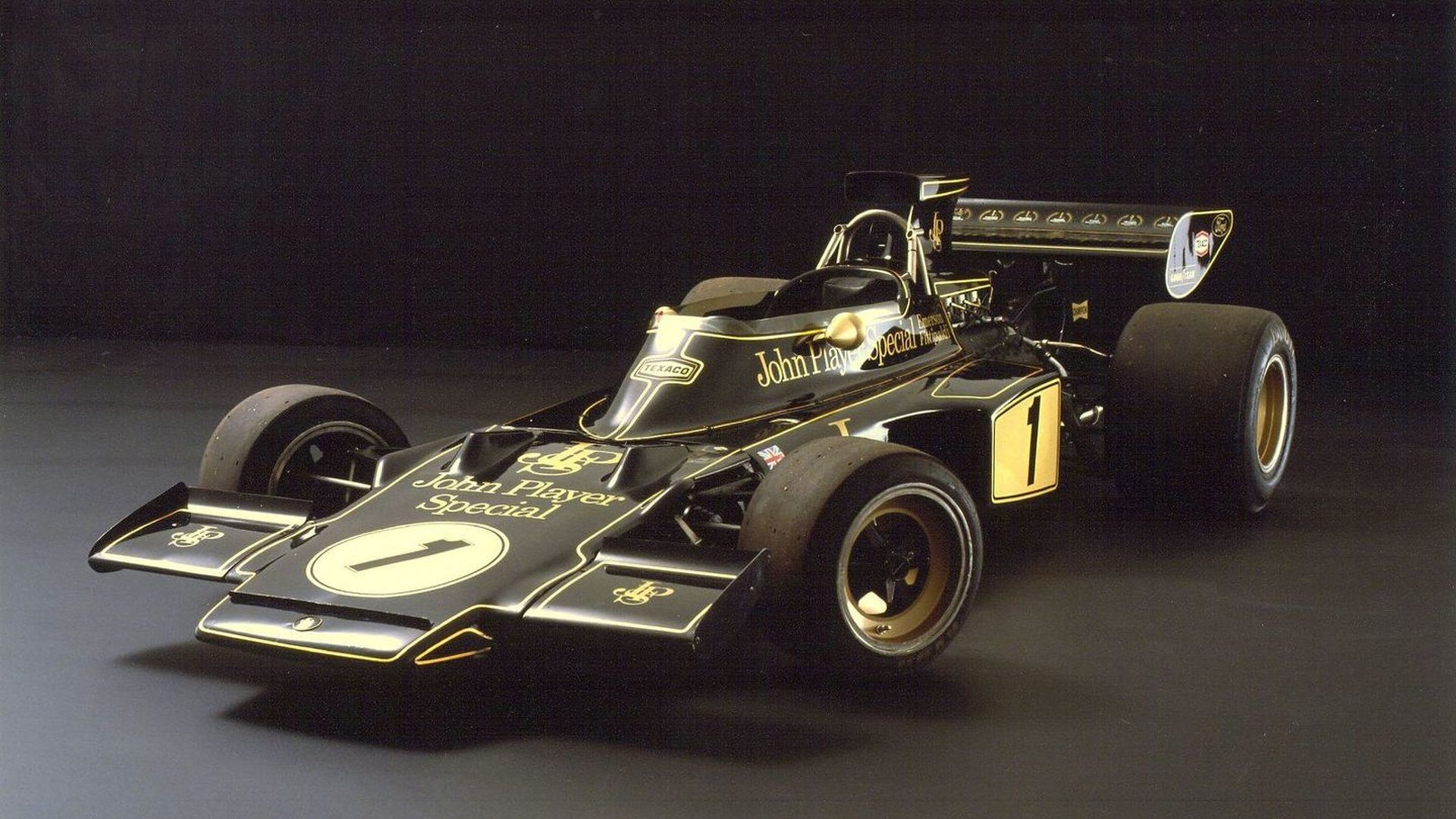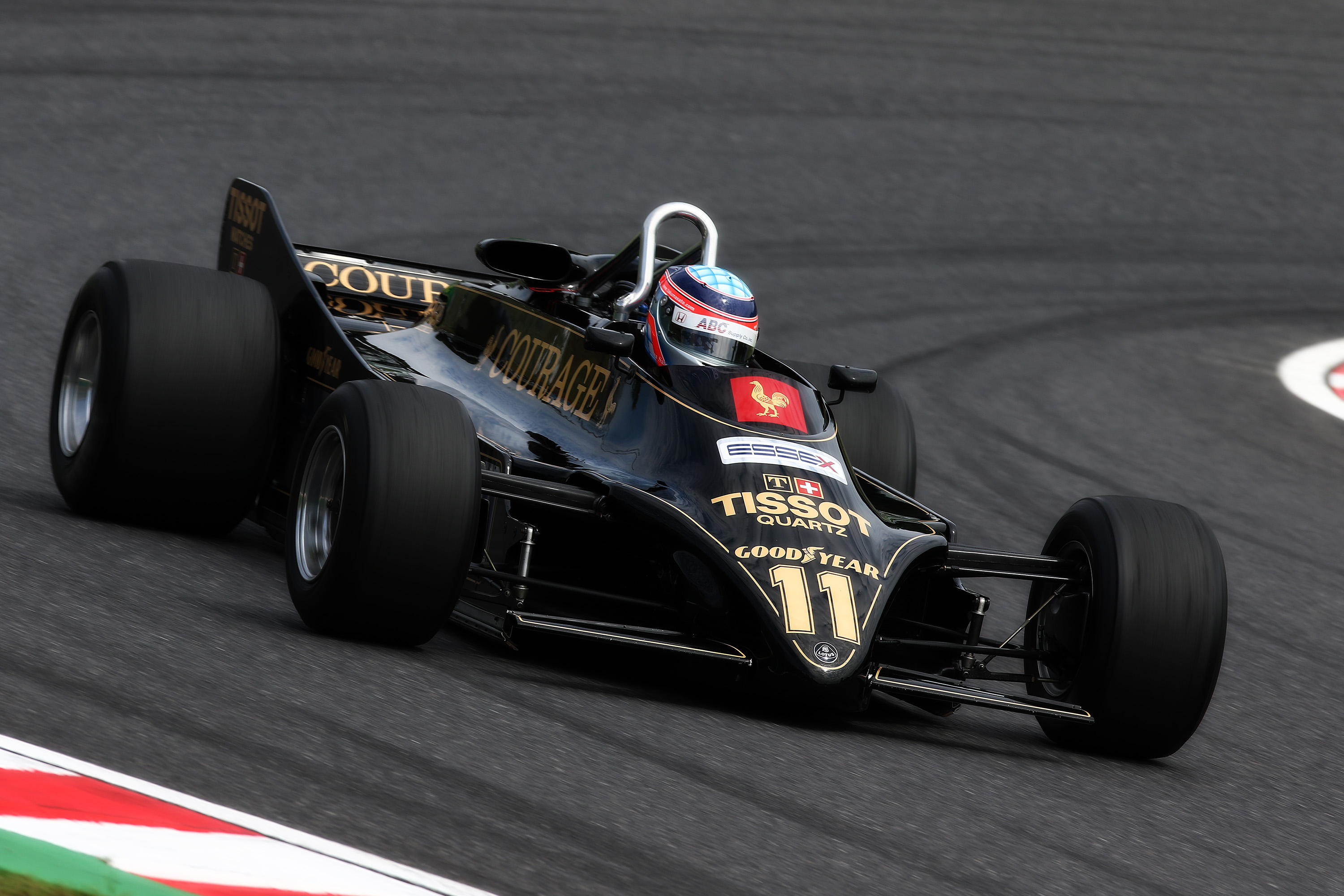The Top 14 Greatest Lotus Race Cars Ever Made
We recently put together a full list of all the Lotus race cars ever to turn a wheel on-track (we also created a full list of all Lotus production cars for those interested in that kind of thing). Part of that research was an eye-opening view of just how innovative Lotus was when it came to racing. Below, we pick the best Lotus race cars in ever made, a list of innovative, unique and dominant machines that raced in everything from Formula 1 to IndyCars and more.
Lotus Type 11 (Eleven)
The Eleven achieved a historic win in the 750cc Class of the Index of Performance at Le Mans. At the Earls Court Motor Show the Type 14 Elite was shown for the first time to great acclaim. This was the FIRST Lotus to carry a glass fibre composite body that also acted as the chassis. The “Eleven” was a class winning car at Le Mans. It set the world speed record for an 1100cc (67 CID) car at 143 mph! The Eleven won in class at the Le Mans 24 hours of Endurance in the 1500cc and 1100cc classes and took the overall win for the Index of Performance. Learn more….
Lotus Elite (Type 14)
In 1959 the Lotus Elite made a huge impression in racing. Sportscar racing was in decline, while GT racing was booming, partly because of the high windscreens the FIA insisted on which slowed the sports-racers. Since race 1.3-litre Elites could hit 137 mph with just 110bhp, Colin Chapman figured that one fitted with a 180bhp 2-litre Coventry Climax motor could win Le Mans. It was never expected to finish, but two Elites started and we were I-2 in class.
Lotus Type 18
Lotus 18 was the first mid-engined car built by Lotus and was a marked improvement over Chapman’s early and only moderately successful front-engined formula cars. The 18 was replaced by the 21 in F1. The Lotus revolution began with the Lotus 18. Although underpowered when compared to the then dominant Ferraris, the Lotus 18 was capable of out handling them. In the hands of Sterling Moss, Lotus scored its first Formula One victory at the 1960 Grand Prix of Monaco.
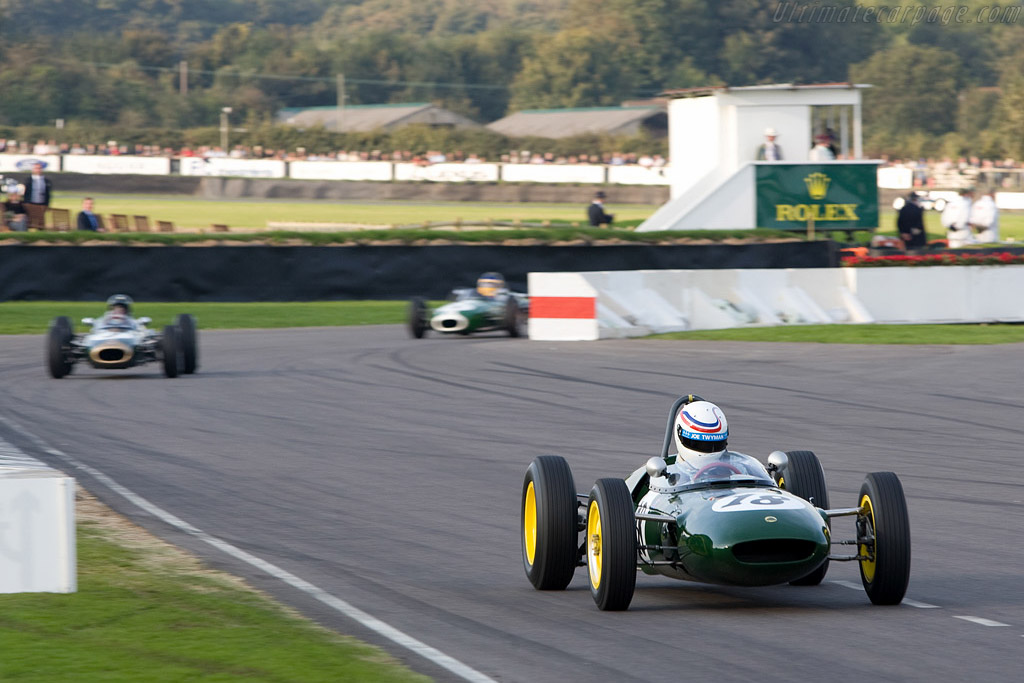
Lotus Type 21
The Lotus 21 had a tubular spaceframe structure skinned with fibreglass panels. Used by the works Lotus team, the 21 was the first works Lotus to win a Formula One Grand Prix (Innes Ireland took first place at Watkins Glen, USA). Demonstrating the typical ‘can do’ attitude of Team Lotus, in only 6 weeks the Type 21 was designed and built to compete in the 1961 Formula One season.
Lotus Type 25
It was the first fully stressed monocoque chassis to appear in Formula One. In the hands of Jim Clark it took 14 World Championship Grand Prix wins and propelled him to his 1963 World Championship title. The 25 was the first F1 car to use a revolutionary fully stressed ‘monocoque’ chassis design which was revolutionary at the time because it abandoned all the existing conventions for building race cars and reinforced Chapman’s reputation as a brilliant engineer. Winning four Formula 1 races in its first year, at the hands of the talented Jim Clark, just missing out on the Championship in the final race.
In 1963, with Jim Clark at the wheel of the Type 25, Lotus secured its first Formula One Constructors’ Championship, and the Drivers title; this was also the first Drivers’ World Championship for Clark, winning seven out of ten races. Both titles were won with an astonishing maximum points. That ’63 season was dominant, Clark scoring almost twice as many points as his closest chasers, Graham Hill and Richie Ginther. It was the first of six Team Lotus drivers titles between 1963 and 1978.
Lotus Type 29
Chapman developed his first Indianapolis car, the Type 29. Dubbed the Type 29, Lotus’ first Indy racer was effectively an enlarged version of the successful F1 car. This was done to meet the minimum wheelbase requirement and to accommodate for the new engine, which was over twice as large as the diminutive Coventry-Climax V8 used in the Type 25. As on the F1 car, the chassis consisted of two sheet aluminium pontoons that were connected by various steel cross-members and double as the bottom of the body. Chapman’s Lotus 29 Indycar of 1963 was part of a massive revolution by moving the engine from front to rear. With a power to weight ratio of over 800 bhp per ton Lotus proclaimed it to be one of the most, if not the most potent piece of racing machinery ever built. After leading the Indy 500 for 28 laps, Jim Clark finished in second place.
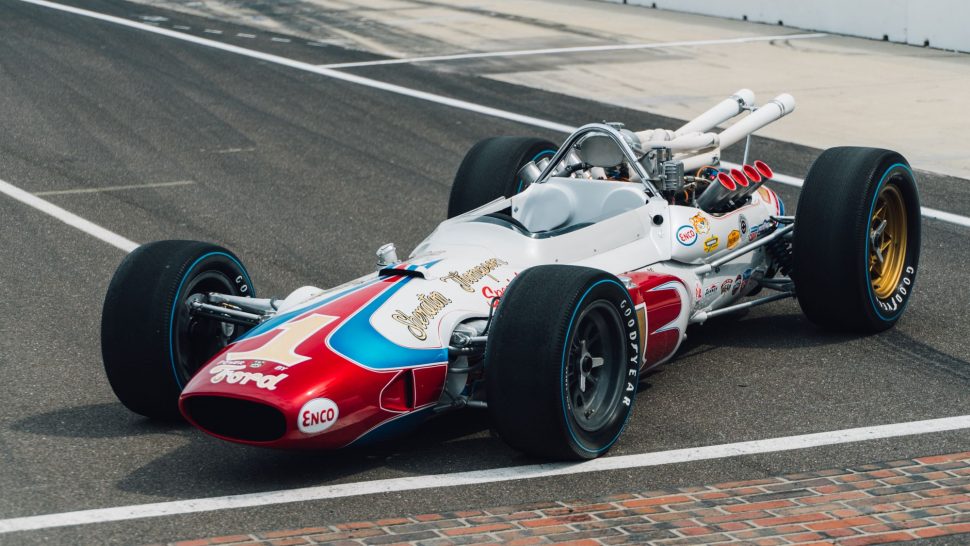
Type 34
The ‘winningest Indy Lotus’. The Type 34 was Lotus’ second Champ Car. Based on the earlier Lotus 29, it was a very similar car which differed principally in featuring a four-cam 4195 cc (255ci) DOHC Ford V8 with Hilborn fuel injection, producing 425 bhp (317 kW), through a ZF 2DS20 gearbox. At Indianapolis, Jim Clark qualified on the pole, joined by five other similar cars. The Dunlop tyres failed during the race, leading to Clark crashing and the second 34 being parked. It was driven in period by A.J. Foyt, Dan Gurney, Parnelli Jones and Jim Clark. With Jones driving, Lotus 34, chassis 2 (the car in the above photo), earned its first pole, and first win, at Trenton in September 1964, but it was Foyt who’d racked up seven more pole positions and three more victories during the 1965 season with the car.
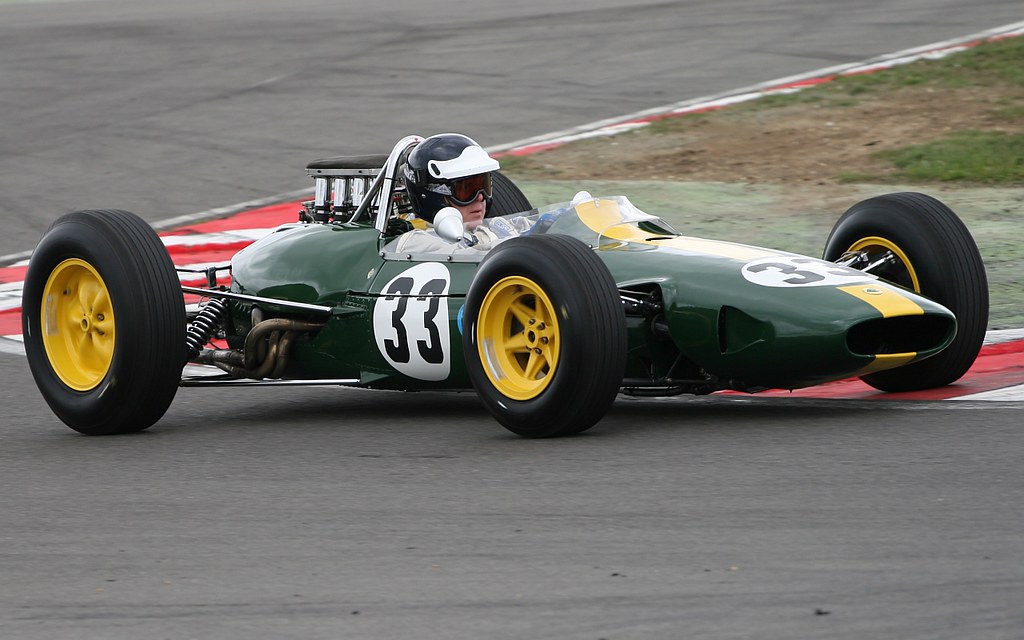
Lotus Type 33
The Lotus 33 was closely based on the 25, and the specifications of the two cars appear similar but with the advent of wider Dunlop tires mounted on 13in wheels drove a need for new suspension design and a stiffer chassis. The Lotus 33 also had a slightly longer engine bay to accommodate the later versions of the Coventry Climax V8 engine. This development of the successful Lotus 25, in the hands of Jim Clark it won 5 World Championship Grands Prix in 1965, assisting Clark to his second World Championship.
The 1965 season began with South Africa holding the first race which was dominated by Clark in his Lotus followed by Surtees and Hill. Monaco was next and the race was held without Clark, who was at Indianapolis winning that year’s classic in a Lotus Type 38 powered by an American Ford. Clark returned for Spa and won in the wet. He continued his success. With only the top six races counting Clark claimed a perfect score and his second World Championship.
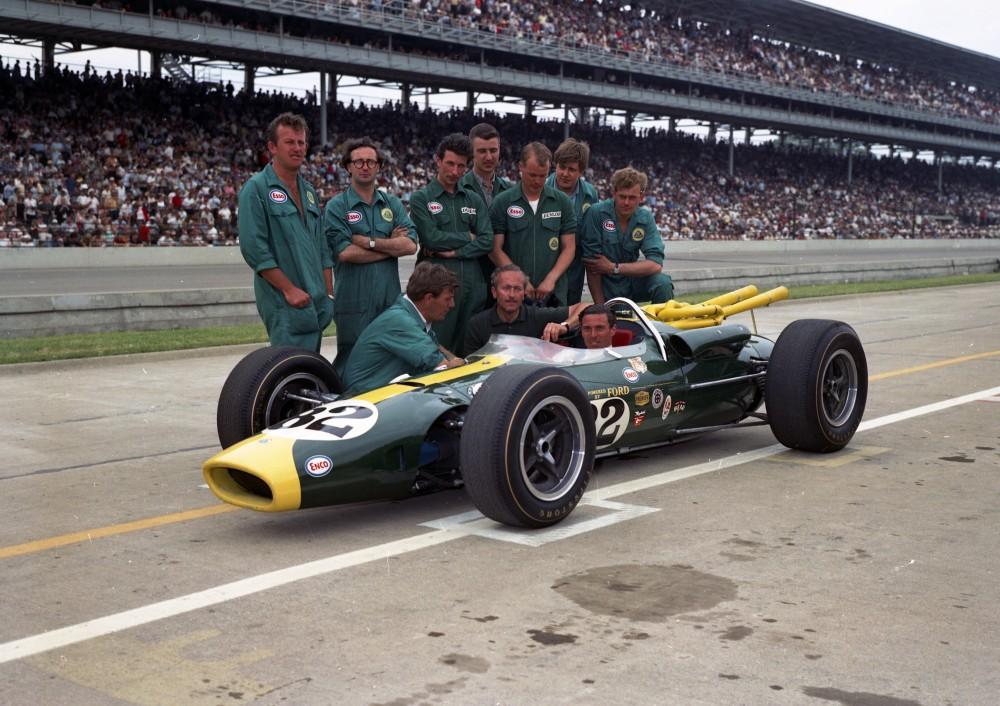
Lotus Type 38
The 1965 Lotus 38 finally won the Indy 500 for Colin Chapman and Jim Clark after Clark had finished second in 1963 in the Lotus 29 and had retired after leading from pole in 1964 in the Lotus 34. In the new Type 38 Clark lead virtually from the start, averaging 150.686mph – a new record.
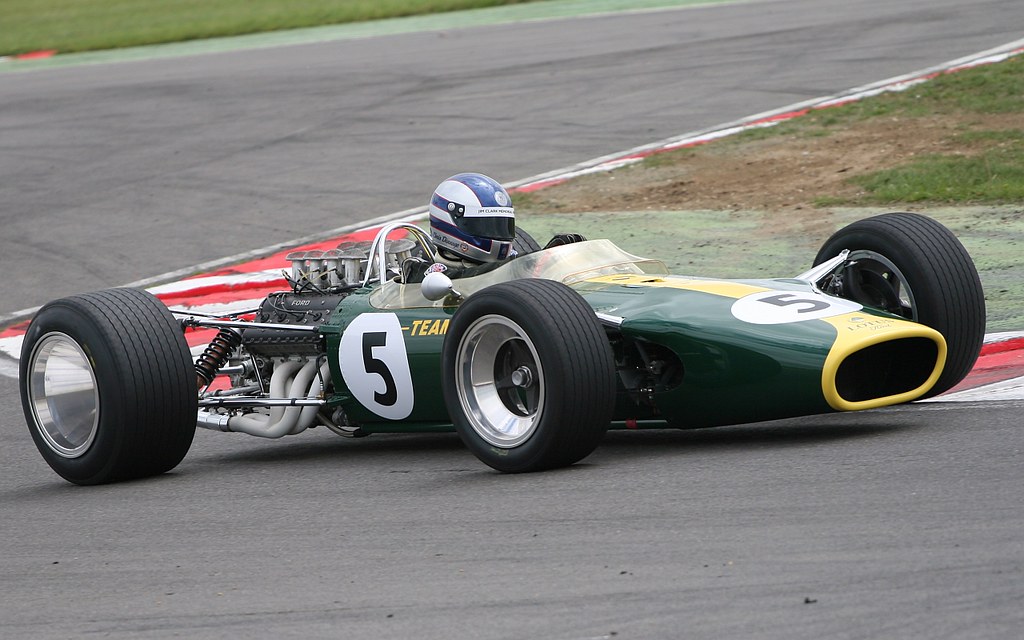
Lotus Type 49
Announced in 1963 the 3-liter Formula was now one year old and after an unsuccessful 1966 season using a variety of engines including the H-16 BRM, Chapman was desperate for a new power source. He found one and boy did it work. Designed around the Cosworth DFV engine and built for the 1967 season, the Lotus 49 won on debut. Graham Hill went on to win that year’s title and the car continued winning races until 1970. It was the first Formula 1 racer to be powered by that now famous Cosworth-Ford DFV V8, a motor which went on to dominate the Formula 1 scene for over a decade. Jim Clark took pole position in the following 11 Grand Prix races. Lotus clinched the 1968 constructors with the subtle addition of front and rear wings to the Lotus 49, another first in Formula 1.
Lotus Type 56B
Made for the 1968 Indianapolis 500, the Type 56B was one of the most technologically advanced race cars ever made. It was gas-powered, but instead of a traditional internal combustion engine, it had a turbine engine (yeah, like the ones on jet aircraft). They almost won too, were it not for mechanical failures at the end of the race. The all-new Indy racer was built around an aluminium monocoque chassis and used a Pratt & Whitney turbine. At the end of the year, both turbine engines and four-wheel drive were outlawed.
Lotus Type 72
The car that most defined the whole first half of 1970s was the Lotus 72. Ask any long-time racing fan what car comes to mind when you say ‘Formula 1’ and at least half of them will think of wedge-shaped black and gold type 72. It’s partly because the Lotus 72 participated in as much as 6 seasons and 74 World Championship races but most of all the car owes its fame to its record of success – 20 Grand Prix wins, 2 Drivers Championships and 3 Constructors Championship titles, results unabridged for more than a decade.
In 1970 when Team Lotus unveiled the innovative Type 72 F1 car it was very innovative. With inboard brakes, torsion bar springs and the use of mid-mounted, side radiators it was possible to create a car with a flat aerodynamic nose. It was also the first car to use a multi-element rear wing. In 1972, in the Type 72, now sporting the famous John Player Special livery, Emerson Fittipaldi won both Constructors’ and Drivers’ Championship.
Lotus Type 79
We cannot mention the Type 79 without talking about the Type 78 before it. There are strong reasons to believe that the Lotus Type 79 along with its predecessor the Type 78 stand as the most significant vehicle designs in racing history.
A little science first. Bernoulli’s equation, known as one of the basics of Fluid Mechanics Theory, states the following: if fluid flows through a constriction, its speed will rise and pressure will fall. Applied on racing car this theory goes like this: air is a fluid. If the bottom of the car is shaped correctly, it is possible to create a low-pressure area under the car. and said car will literally be sucked to the ground. That phenomenon is known as ‘ground-effect’. Since the cornering speed depends on friction between tyres and tarmac, and friction depends on vertical force which is equal to the sum of car’s weight and lift force generated by low pressure area beneath the car; the bigger the pressure-fall is, the better the car performs.
That was the principle behind the Lotus 78 was known as the “wing car” which raced in 1977 and 1978. It was the car that started the F1 ground effects era. The breakthrough was Chapmans insights on low drag air penetration based on the principals above. Lotus continued its winning streak in F1 with the introduction Type 78 and driven by Mario Andretti, Gunnar Nilsson and at the end of the season by Ronnie Peterson it had five wins in 1977. Lotus settled for second place in the Constructors’ Championship.
It was the Lotus 79 that was the first F1 car to take full advantage of ground effects aero, pioneered by the Lotus 78 before it. The 79 was almost unbeatable during 1978. Team Lotus dominated Formula One that year – achieving 12 pole positions, and 8 wins, and yet another Constructors’ and Drivers’ double act.
Lotus Type 88
From 1981 on, the FIA seriously limited the ground effect of cars drastically. The Lotus 88 was built as a careful manipulation of the rule book which is why it makes our list. It was the first car designed with a carbon fibre monocoque, and it had an innovative two chassis set up.
Basically, the car consisted of a primary, external chassis that carried the aerodynamic bodywork, side pods, skirts and wings. The secondary, internal chassis carried the wheels, carbon fibre monocoque, fuel tank, the engine and the transmission. The inner, primary chassis was relatively soft sprung, which allowed the driver to be in quite a comfortable position, as he would not feel all those harsh bumps. The outer chassis, designed to cope with aerodynamic downforce, was attached on the primary chassis’ suspension, close to the uprights by an extremely stiff coil spring damper arrangement.
Despite the fact that the scrutineers had declared the car legal, rival teams had protested and the car was destined never to compete in a Grand Prix. The FIA motivated that the second chassis was actually an aerodynamic device that acted directly on the wheel uprights, a feature that had been banned to improve the safety of fitting aerofoils on cars. Despite the protests of Lotus the car never raced in a Grand Prix.


